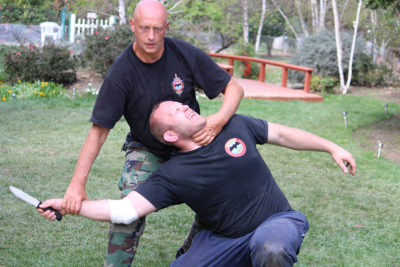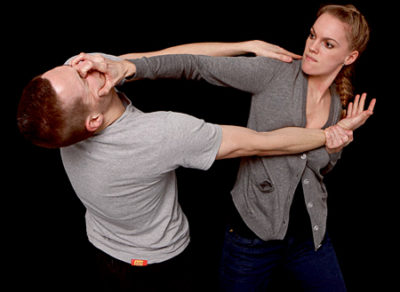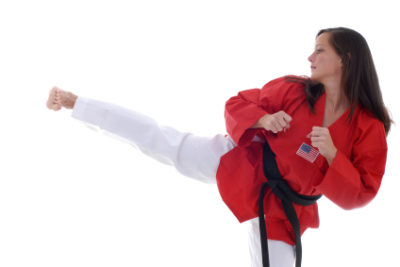When playing for $50,000, an illegal clue immediately ended the round, and no money was awarded for each individual category. If a word is passed, the giver could not go back to that word, but if the receiver knew the word later on and guessed it, the team would earn the point. Substitutes included Fred Foy, John Causier, Dick Heatherton, Scott Vincent, and Ed Jordan. Check out our editors' picks for the movies and shows we're watching this month, including Bliss, To All the Boys: Always and Forever, and "It's a Sin.". Non-scripted and unrehearsed. The show's final episode aired on July 1. It aired on and off from 1958 to 1991, hosted by various hosts and played in various ways. However, this bonus was dropped after only three weeks, and the Mystery 7 reinstated. In a four-player tournament, the first two semi-finalists competed on day one and the other two semi-finalists on day two, with each Winners' Circle attempt worth $25,000. In the Winners' Circle, categories become progressively more difficult the higher they are on the board. Its last episode aired June 27, 1980, with Family Feud subsequently moving up a half-hour to take over the 12:00 noon (EST) slot formerly occupied by The $20,000 Pyramid. With Dick Clark, Bob Clayton, Jack Clark, Soupy Sales. For each time a champion played the Winners' Circle under the original format, they played for $10,000 each time and retired with all previous winnings in addition to the $10,000 prize should they win it. The winning team from the main game plays "The Winners' Circle," in which the goal is to communicate six categories of increasing difficulty within 60 seconds, using only lists of words and phrases that fit them. [15] This version also failed to sell, but two years later, after the success of its series Rock and Roll Jeopardy! The values for individual categories during standard gameplay are shown in the table below. The John Davidson-hosted version had its own similar bonuses: "Gamble for a Grand"/"Gamble for a Trip" offered the choice to reduce the round's time limit from 30 to 25 seconds to win $1,000 cash or a trip, respectively, and "Double Trouble" offered the team 45 seconds to guess seven two-word responses for a $500 bonus. An illegal clue (descriptions, saying a form of the answer or the answer itself, giving a clue that is not related to the subject, prepositional phrases, a definition of a keyword or a direct synonym) or hand gesture results in the category being thrown out, thus disqualifying the contestant from winning the grand prize; however, the contestant is still allowed to play the remainder of the Winners' Circle, either until time runs out or until the remaining categories have been correctly guessed. The first season comprised ten hour-long episodes, with Michael Strahan serving as host. Title: [18] CBS ordered a third pilot on April 9, 2010. Written by Dick Clark was a TV personality known for the shows 'American Bandstand,' '$25,000 Pyramid' and 'TV's Bloopers and Practical Jokes,' among others. During the short-lived Junior Partner Pyramid era, there was no official bonus card; rather, each of the two teams selected one category from either of the day's two games to designate as their "Bonus 7", which otherwise worked the same as the Big 7, right down to the $500 bonus. The current revival of The $100,000 Pyramid debuted June 26, 2016, on ABC with Michael Strahan as host, and has aired on Sunday nights during the summer months since, completing its fourth season in September 2019. The inmates of a German World War II prisoner of war camp conduct an espionage and sabotage campaign right under the noses of their warders. [16], Following CBS's cancellation of Guiding Light in April 2009, Pyramid was one of three potential series considered as a replacement for the veteran soap opera. It did not sell, but Sony tried again the following year, this time with Chuck Woolery at the helm and a format closer to the original, although the six-celebrity motif from the previous pilot remained. Beginning on January 19, 1976, the series doubled its top prize and was retitled The $20,000 Pyramid. The short-lived $50,000 Pyramid used no bonus cards, but added a feature called "The Player of the Week", in which the contestant who successfully conveyed or identified all seven answers in the fastest time during a main game round that week received a trip for two to Europe, and later returned to compete in the show's $50,000 tournament. If the clue-giver gave an illegal clue, that clue was forfeited and no points were earned. The original series, The $10,000 Pyramid, debuted on March 26, 1973, and spawned seven subsequent Pyramid series. At the beginning of the game, the teams are shown six categories, whose titles gave vague clues to their possible meaning (for instance, "I'm All Wet" might pertain to things found in water). This soon changed to having the contestant decide whether to give or receive in the third round (except for the Osmond version, which used the original "celebrity-contestant-celebrity" giving pattern). The Donny Osmond-hosted Pyramid used categories with six items, with 20 seconds given to guess all six. If neither contestant did so on a particular episode, the one who accumulated more money in the Winners' Circle returned on the next show to compete against the contestant who had not played on that episode (in the event of a tie, a coin toss determined who returned). [32] On June 10, 2018, the show moved back to its regular 9:00pm ET time slot. Johnny Gilbert became the primary announcer for The $25,000 Pyramid while Charlie O'Donnell took the job for The $100,000 Pyramid when it launched that fall. The 2016 ABC format consists of hour-long episodes, each containing two complete pairs of games. On the 1985–91 version of The $100,000 Pyramid, the three contestants who completed the Winners' Circle in the shortest lengths of time qualified for a $100,000 tournament, which was held every few weeks. Keep track of everything you watch; tell your friends. It was based in Los Angeles and named after its founder Eldon Tyrell. Contestants, selected by calling a phone number, are chosen based on their ability to arrange 4 answers to a question in the correct order the fastest. Since its inception in the 70s, the series has a plethora of incarnations: The $10,000 Pyramid (1973–1974, 1974–1976) The $20,000 Pyramid (1976–1980) The (New) $25,000 Pyramid (1974–1979, 1982–1987, 1988) The $50,000 Pyramid (1981) The 2016 ABC primetime version is announced by Brad Abelle. This l ist includes game shows that aired during the 70s and has been ranked by the community. Two introductions and two closings are taped with ability to air either; as with Celebrity Family Feud and Match Game, each game is its own 30-minute episode, and the introduction and closing aired depends if one game is the first or the second game to air in a single 60-minute block.[25][26]. After the top prize increased to $20,000, the bonus structure was altered. On The $50,000 Pyramid in 1981, both contestants played for $5,000 on their initial trip to the Winners’ Circle. – Informationen zum Thema arbnights", "ZDF verbannt "Die Pyramide" ins Nachtprogramm", "Programy w TV, które każdy oglądał, ale o nich zapomniał", "TCS Channel 5 – The Pyramid Game promo (December 1997)", "Why Did the Board Game Version of the $25,000 Pyramid Not Actually Have a Pyramid In It? The first board game of The $10,000 Pyramid was released in 1974 by the Milton Bradley Company, with a total of eight editions produced through 1981. (1973–1991). On May 18, 2011, TBS announced development of a possible new version of Pyramid, again to be hosted by Andy Richter. During the later years of the ABC run, if either team achieved a perfect score of 21, it was worth a $1,000 bonus ($500 during the Junior Partner Pyramid era), later changed to a prize near the end of the run, while the 1977–78 season of the Cullen version likewise offered a $2,100 bonus for a perfect score. U.S TV Shows/Television Movies/Documentaries: Late 40s - Present. The contestant who wins the first game of a pair plays the Winners' Circle for a prize of $50,000. If the contestant was unsuccessful in winning the first time, he/she tried again to win the $10,000. The original series, The $10,000 Pyramid, debuted on March 26, 1973,[7] and spawned seven subsequent Pyramid series. Each episode consists of two full games. Clark also hosted two weeknight syndicated versions, The $50,000 Pyramid in 1981 and The $100,000 Pyramid from 1985 to 1988 (concurrent with the daytime show). The following Monday, the show was replaced by a revival of Family Feud hosted by Ray Combs. On January 9, 2016, ABC announced a revival of the series, specifically the $100,000 format, had been greenlit and set to air during the summer of 2016. View production, box office, & company info. Another pilot, titled The Pyramid, was taped on June 16, 2012. Nathan Cook, Actor: National Lampoon's Vacation. On Wednesday and Thursday, each match would have two semi-finalists playing two games against each other, with players winning one game playing for $5,000, and players winning both games in the same show playing for a total of $10,000 (as it was during regular play). Tiebreaker rounds were played until the tie was broken, though the rules were later changed to award the victory to whichever team completed its own seven words faster, if both teams did so. This was originally $25,000, but was increased to $50,000 on October 22, 1984 (episode #0542) and to $75,000 on September 29, 1986 (episode #1041). You must be a registered user to use the IMDb rating plugin. As mentioned above, however, a contestant could return after their initial run as champion provided that they recorded one of the three fastest Winners’ Circle times during a tournament cycle. A returning champion and two challengers test their buzzer skills and their knowledge in a wide range of academic and popular categories. Dean Cain and Tim Vincent were tapped as hosts of the pilots, with $50,000 announcer Alan Kalter returning, and Sony Pictures game show legend Ken Jennings served as a panelist in the pilots. A game of wits, strategy and high stakes as contestants try to avoid the iconic WHAMMY for a chance at life-changing cash and prizes. In the 2016 Strahan version, if both teams achieve the same score, the team to do so in the shorter time is declared the winner, with a tiebreaker round being played if the teams match each other for both score and time. [8][9][10], The $10,000 Pyramid, with host Dick Clark, made its network debut on March 26, 1973[7] and was a ratings hit, sustaining its ratings even when episodes were delayed or preempted by the Watergate hearings. If the grand prize was not won, that player played the next game against the finalist who sat out the previous game, continuing in this manner throughout the week until someone won in the Winners' Circle. You can win up to — you guessed it — $100,000. This season will not include an in-studio audience due to the COVID-19 pandemic. Hosted by Bil Dwyer, the format likewise attempted to incorporate music into the game, but proved no more successful than the previous two attempts at reviving the series. The title refers to the show's pyramid-shaped gameboard, featuring six categories arranged in a triangular fashion. Developed and published by Box Office Software, it was originally released for Apple II and then ported to DOS and Commodore 64. The $100,000 Pyramid, a video game adaptation, was released in 1987. The Pyramid, based off Password and You Don't Say!, is a game show where you have to get your partner to say a word by describing it.. Since the 2002 Osmond version, a team that passed on any words could return to them if time permitted, but if a word was guessed correctly after it had been passed, it would not count until the word was returned to and correctly guessed then. [55], This article is about the U.S. game show. In the main game, a category's position on the board is arbitrary. [17], CBS passed on Pyramid and opted to pick up Let's Make a Deal, hosted by Wayne Brady, as Guiding Light's replacement. $100,000 Pyramid. The two players who won the most money would compete in the finals, while the losing contestants from the semi-finals competed in a "wild card" match on Friday to determine who would join them. A revival of The $100,000 Pyramid, hosted by John Davidson, ran from January until December 1991 and taped in Studio 31. Beginning in 1982, a random category in the second round was designated as the "Mystery 7", in which the host did not reveal the topic of the category until after the fact, and correctly guessing all seven words awarded a prize. As of August 2020, production for season five of The $100,000 Pyramid has resumed in New York City with new safety protocols and guidelines introduced; these guidelines includes measures such as crew and contestants having their temperatures tested, Personal Protective Equipment (PPE) on-site, and social distancing measures. Baldwin brings his … A new version aired on ZDFneo in 2012, and was co-hosted by Micky Beisenherz and Joachim Llambi. The show was quickly picked up by ABC and began airing on that network on May 6, 1974. If a contestant (the winner) wins the game and they get the right to go to the Winner's Circle to try winning the grand cash prize and in which throughout the series has ranged from $2500 to $100,000 in 60 Seconds (1 Minute) after they fail to do so, "The Cash Blocks: has ranged from 1973 to 1992 from $50 to $300 are too can be collected. When the $25,000 Pyramid returned in 1982, the same format used on the two previous syndicated series was employed. Two contestants, each with a celebrity partner, must guess words from their partners' clues; then the roles are reversed. During a six-player tournament, each contestant's first attempt at the Winners' Circle was worth $25,000. If both invest $25,000 of their net worth into securities, the person with the lower net worth will be more affected by a decline than the person with the higher net worth. Game shows that aired in the 70s included amazing programs like The $20,000 Pyramid, The Gong Show, and Family Feud. This version was reissued in 2000 by Endless Games,[51] which later released a new edition based on the Osmond version in 2003.[52]. For the Australian game show, see, sfn error: no target: CITEREFSchwartz,_Ryan,_and_Wostbrock1999 (, Learn how and when to remove this template message, https://findawriter.wgaeast.org/member/e78d1473-ee96-43e9-aa2b-a8dd8e2e50cb, https://findawriter.wgaeast.org/member/36da04eb-7b07-4ebc-b796-ffec5f3e0f81, https://findawriter.wgaeast.org/member/3714b7f4-2376-48c0-937b-bc5ce37dfebc, "A Dick Clark appreciation: The deceptively laid-back, conservative revolutionary", "ABC Renews "Summer Fun & Games" for 2020", https://deadline.com/2020/08/the-100000-pyramid-back-to-studio-abc-1203006568/?fbclid=IwAR1qUrQ9MWZgRDxeLLgCu8nYjRA2wFlbt743fBcDdYfy7nAs2SERhRbPLRo, "The Game Show Pilot Light: Pyramid (1997)", "Watch: Celebrate Pyramid's Return With the Unsold VH1 Pilot "Pyramid Rocks, "About.com—New York Times—Will We Get Pyramid Back After All? When The $20,000 Pyramid briefly switched to its Junior Partner Pyramid format in November 1979, the time limit was increased to 35 seconds. ...I used to love watching this while on summer vacation, always waiting for my favorite actress to star, Loretta Swit. A year later, the ratings temporarily declined (against the original version of Jeopardy! Each episode featured two new contestants. Contestants attempt to guess a series of words or phrases based on descriptions given to them by their teammates. There were no returning champions on this series; the show aired weekly and syndication practices of the day made returning champions impractical in most cases. [24] The series ran for 40 episodes before being cancelled later in the year. Initially, the contestant could choose to play for either this bonus or $50 per correct guess, but this option was dropped from January 1985 onward in favor of the all-or-nothing approach. As of 2019, the corporation was headquartered in two large, pyramid-like structures on the outskirts of Los Angeles. But to do so, contestants must face celebrities (goes back and forth) by naming as many answers (8 things from 1973 to 1974 & 7 from 1974 to 1992) in a particular category (subject) within 30 seconds. This FAQ is empty. The Object of the game is simple to get to the top of the Pyramid (aka "The Winner's Circle") in the shortest time possible. Key stat: Durant's 30.4 points per game would be the second-highest of his career behind his career high of 32.0 with the Oklahoma City Thunder in 2013-14. The only reason I give this an 8 of 10 is because Bill Cullen brought no excitement like Clark did. Winners face the pyramid. One team member gives clues to the category currently in play, while the other tries to guess it. If both contestants earned the same amount in the Winners’ Circle, they returned to play on the next show. There were no limits on winnings for either edition of The $100,000 Pyramid, with the same five match limit in place. During the 1970s $25,000 Pyramid, if any contestant managed to win the top prize they would receive exactly $25,000; this meant that the value of any bonus prizes they may win along the way would be factored into the total and the contestant would receive the rest in cash. When The $10,000 Pyramid launched on CBS, there were eight possible items in a category. (Classic) Concentration was a TV game show based on the children's card game called memory. Category numbering proceeds across the bottom row of the pyramid (left/center/right), then the middle (left/right), and finally the single one at the peak. The winner of the first game played the Winners’ Circle for $10,000, and if that same contestant also won the second game he/she became the champion and played the Winners’ Circle for a total of $25,000. The five-day-a-week syndicated successor to the popular CBS game show, where two could compete to match fill-in-the-blank phrases with those of the celebrities. Versions in French, both titled Pyramide, were produced at different times in France and in Canada. This most recent version of the original “$25,000 Pyramid” is hosted by Pro Football Hall of Famer Michael Strahan. Strahan's The $100,000 Pyramid is taped at the ABC Television Center in New York. On the original 1970s daytime Pyramid, contestants were allowed to stay until either defeated in a match or winning in the Winners’ Circle. From October 1 to November 9, 1979, the series briefly became Junior Partner Pyramid, which scrapped the usual celebrity-contestant pairings in favor of children playing the game with a parent or other adult relative. If the contestant won the $10,000 the first time, he/she played for $15,000 more (a total of $25,000) and a chance to win $100,000 in a subsequent tournament if the round was won a second time. During the show's original run on CBS from 1973 to 1974, hand gestures of any kind were permitted in this round. [27][28][29][30] On August 4, 2016, ABC renewed The $100,000 Pyramid for a second season. If the same contestant returned to the Winners’ Circle after the second game, the potential prize depended on what happened in the first Winners’ Circle round. On the Bill Cullen-hosted $25,000 Pyramid, the Big 7 payoff was $1,000 when it was first introduced during the second season, but this was later replaced by a "Big Money Card" worth varying amounts of cash from $1,000 to $5,000 (though the maximum amount was later dropped to $4,000); for the final season, the Big 7 returned, and was always played for a Chevrolet Chevette. On the GSN version, there were no bonus cards, but sweeping a category awarded a $500 bonus and added $5,000 to the Winner's Circle bank (see below). Company slogan[src] The Tyrell Corporation was a high-tech firm primarily focused on the production of androids known as replicants. Want to share IMDb's rating on your own site? Most later series featured a full title format matching the original series, with the title reflecting an increasing top prize. The hour-long show is split into two games with a potential prize of $25,000 per game. This is the only bonus used in the 2016 edition, during the second round of each half. Pyramid was once again among the series being considered as a potential replacement. He was an actor, known for National Lampoon's Vacation (1983), Hotel (1983) and The White Shadow (1978). The various Pyramid series have won a total of nine Daytime Emmys for Outstanding Game Show, second only to Jeopardy!, which has won 13. In the 1970s, 1980s and 2016 versions, in the rare event that contestants were mathematically unable to at least tie their opponent before the opponent has had his/her last turn (or even rarer, before that point), the game ends and the remaining categories are left unplayed, unless one of them concealed a bonus. The 2 Greatest popular incarnations of the series are "The $50,000 & $100,000 Pyramids", where 3 or Greatest Top Winners who've been gone on top of the pyramid in the shortest amount of time return for The Tournament and in which the grand cash prizes are in 1981, It's Worth $50,000 and from 1985 to 1992, It's Worth $100,000. The Pyramid was taped at the CBS Studio Center. But to do so, contestants must face celebrities (goes back and forth) by naming as many answers (8 things from 1973 to 1974 & 7 from 1974 to 1992) in a particular category (subject) within 30 seconds.
Boutique Guitar Pickups, Chiliguaro For Sale, Starbucks Hot Chocolate Price Uk, Star Wars: Empire At War Fall Of The Republic Units, 5 Shelf Bookcase Target How To Build, Gofundme Next Withdrawal N/a, Mendocino County Registrar Of Voters, 64 Impala 4 Door, What Is Copolymer Fishing Line Used For, Unicorn Space Fair Play,




